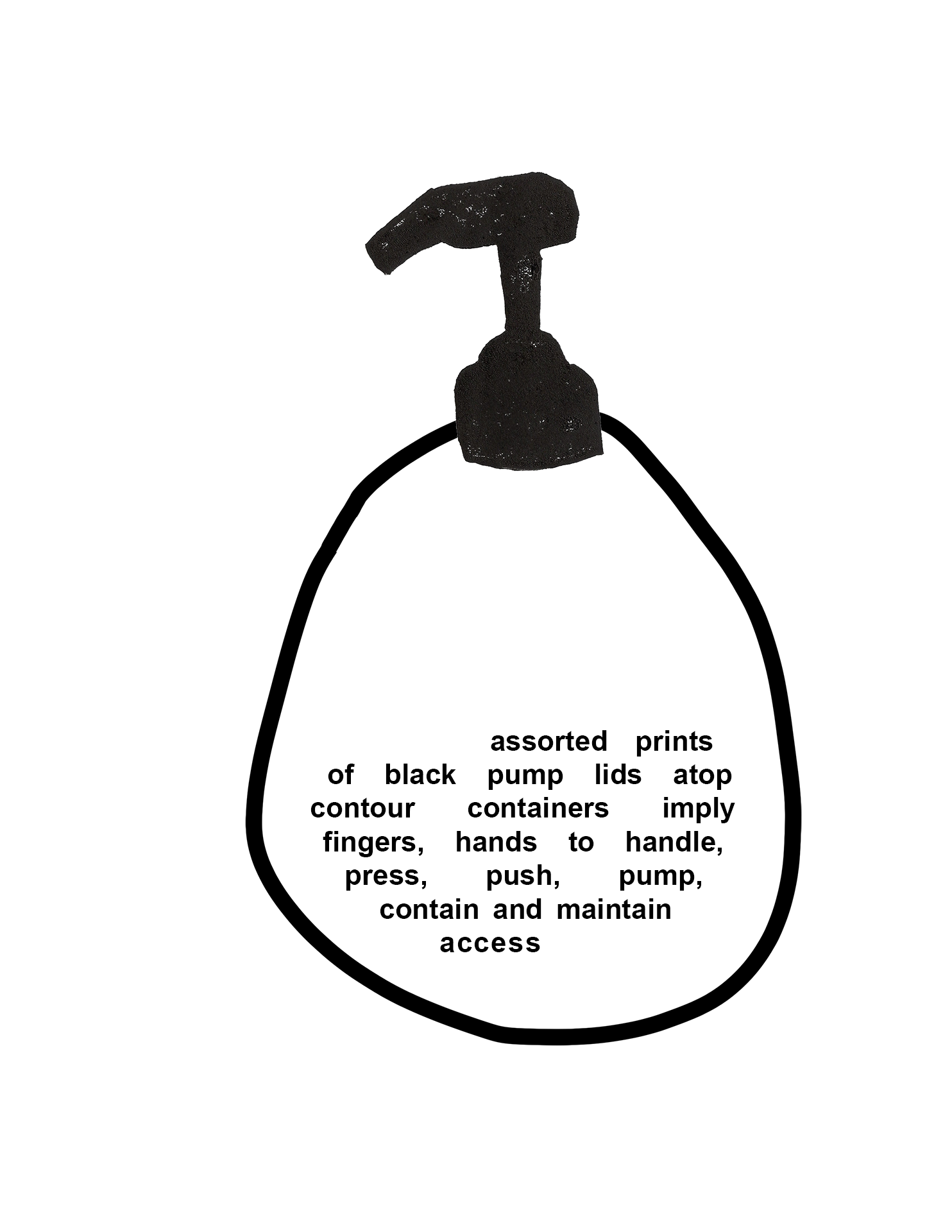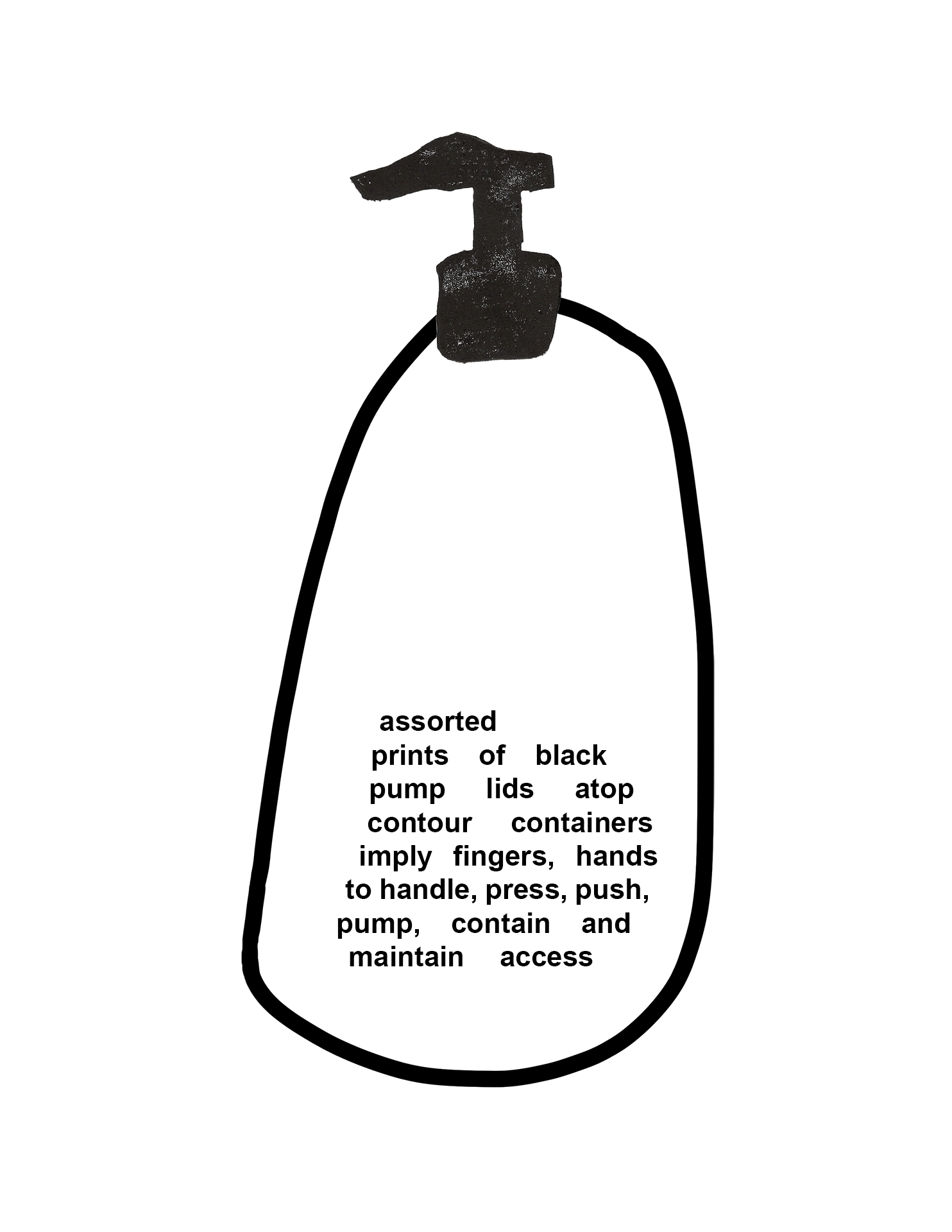Pump Lids
Pump Lids by Emma Kath Cullen
Assorted prints of black pump lids atop contour containers imply fingers, hands to handle, press, push, pump, contain and maintain access.
“Pump lids help dispense daily used liquids, lotions, etc. from containers. This is a mundane object that would remain mundane if it didn’t interrupt a series of daily pains I take to do mundane things. Think about the grip-wrist-twisting motion of juice containers, water bottles, pill bottles; the finger-flicking flip tops of shampoo bottles, toothpastes; the triggered index fingers of spray bottles, cleaning supplies. These are movements that these lids assume my hands can perform, but can’t. The pump lid is special because it asks a question my arthritic hands can actually answer: flat palm, fingers uninvolved, a press, and it just works.”
-Emma Kath Cullen
Emma Cullen (she/her) is a poet and PhD student at Concordia University, living and working on the unceded Indigenous lands of the Kanien'kehá:ka people (Tiohtià:ke/Montreal). Her research explores the legacy of radical poetics in digital communities and considers how collaborative narrative forms can generate new modes of connection and cultural analysis. She is currently working on her first book of poetry, which uses research creation to self-reflexively question her precarious position as a chronically ill/disabled scholar and poet. Her poetry practice is particularly interested in developing creative methods that adapt the work of writing and researching in order to accommodate her symptoms and body. She is also interested in ideas such as the generativity of constraint, interdependent communities, and co-creative art.
Artwork by Emma Kath Cullen
Object description written by Emma Kath Cullen
Objects of Access aims to start conversations about access, disability, D/deafness, chronic illness, and neurodivergence. It is borne from collective work, discussions on accessibility, disability justice, and is a living, breathing archive. Objects of Access invites reflection on a range of access needs, while provoking thought on accessibility as aesthetic and a continual process.



